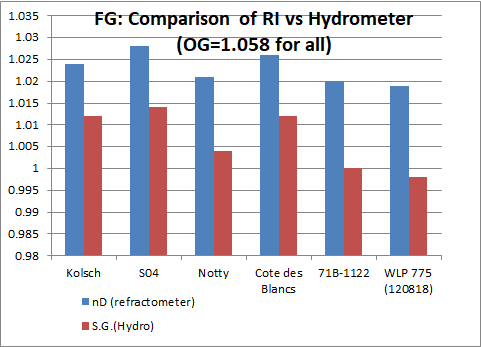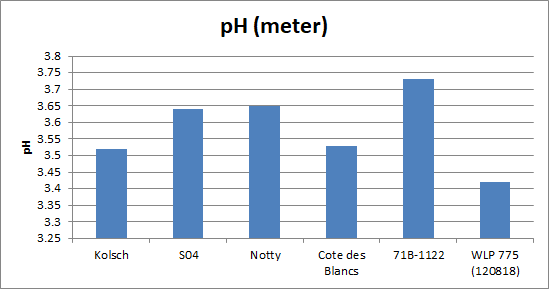quid_non
Active Member
- Joined
- Mar 19, 2017
- Messages
- 26
- Reaction score
- 15
Greetings All!
Been playing around with making hard cider form both Costco Pasteurized AJ and fresh pressed (non pasteurized, but sulfite treated) AJ. Costco AJ has no preservatives (Sorbates, etc...). After several batches using Mangrove Jack M02 yeast all have turned out good, but looking for some new options. After some sleuthing (this site and others) I have complied a list of Cider Yeasts others have tried and recommend (or not...) Thought I would share this and some "Cider Wars" ferment off plans now in progress.
Cider Yeasts: (In no particular order)
Mangrove Jacks M02 Cider
Lalvin 71B-1122
Nottingham Ale
Safale S-04
WLP720
WLP775
Wyeast 4184 (SMACK PAK)
Wyeast 4766
Red Star Cote Des Blancs
WLP002 English Ale
WLP028 Edinburgh Ale
WLP862 Cry Havoc
WLP773
Brewers Best Cider House Select
Belle Sasion - Danstar
Vinters Harvest VR21
Vinters Harvest R56
Black Rock Cider Bread Yeast
Safcider
The ones above in RED are planned for 1Gal fermentation tests - all will be tested from the same lot of AJ (Costco). I'm looking for input on the next round to try - please feel free to suggest 4 additional candidates (from the list above or others not included...) based on your preference / past experience or curiosity...
I will update the post with specifics and taste notes as this progresses. Goal is to down select two yeasts for this years upcoming Apple harvest.
Also - see link below for a recent review of a few WLP Yeasts judged for Cider Making:
https://www.homebrewersassociation.org/attachments/0001/5982/Cider_Yeast_Comparison__final_.pdf
Ferment on!
Been playing around with making hard cider form both Costco Pasteurized AJ and fresh pressed (non pasteurized, but sulfite treated) AJ. Costco AJ has no preservatives (Sorbates, etc...). After several batches using Mangrove Jack M02 yeast all have turned out good, but looking for some new options. After some sleuthing (this site and others) I have complied a list of Cider Yeasts others have tried and recommend (or not...) Thought I would share this and some "Cider Wars" ferment off plans now in progress.
Cider Yeasts: (In no particular order)
Mangrove Jacks M02 Cider
Lalvin 71B-1122
Nottingham Ale
Safale S-04
WLP720
WLP775
Wyeast 4184 (SMACK PAK)
Wyeast 4766
Red Star Cote Des Blancs
WLP002 English Ale
WLP028 Edinburgh Ale
WLP862 Cry Havoc
WLP773
Brewers Best Cider House Select
Belle Sasion - Danstar
Vinters Harvest VR21
Vinters Harvest R56
Black Rock Cider Bread Yeast
Safcider
The ones above in RED are planned for 1Gal fermentation tests - all will be tested from the same lot of AJ (Costco). I'm looking for input on the next round to try - please feel free to suggest 4 additional candidates (from the list above or others not included...) based on your preference / past experience or curiosity...
I will update the post with specifics and taste notes as this progresses. Goal is to down select two yeasts for this years upcoming Apple harvest.
Also - see link below for a recent review of a few WLP Yeasts judged for Cider Making:
https://www.homebrewersassociation.org/attachments/0001/5982/Cider_Yeast_Comparison__final_.pdf
Ferment on!






































![Craft A Brew - Safale BE-256 Yeast - Fermentis - Belgian Ale Dry Yeast - For Belgian & Strong Ales - Ingredients for Home Brewing - Beer Making Supplies - [3 Pack]](https://m.media-amazon.com/images/I/51bcKEwQmWL._SL500_.jpg)


























